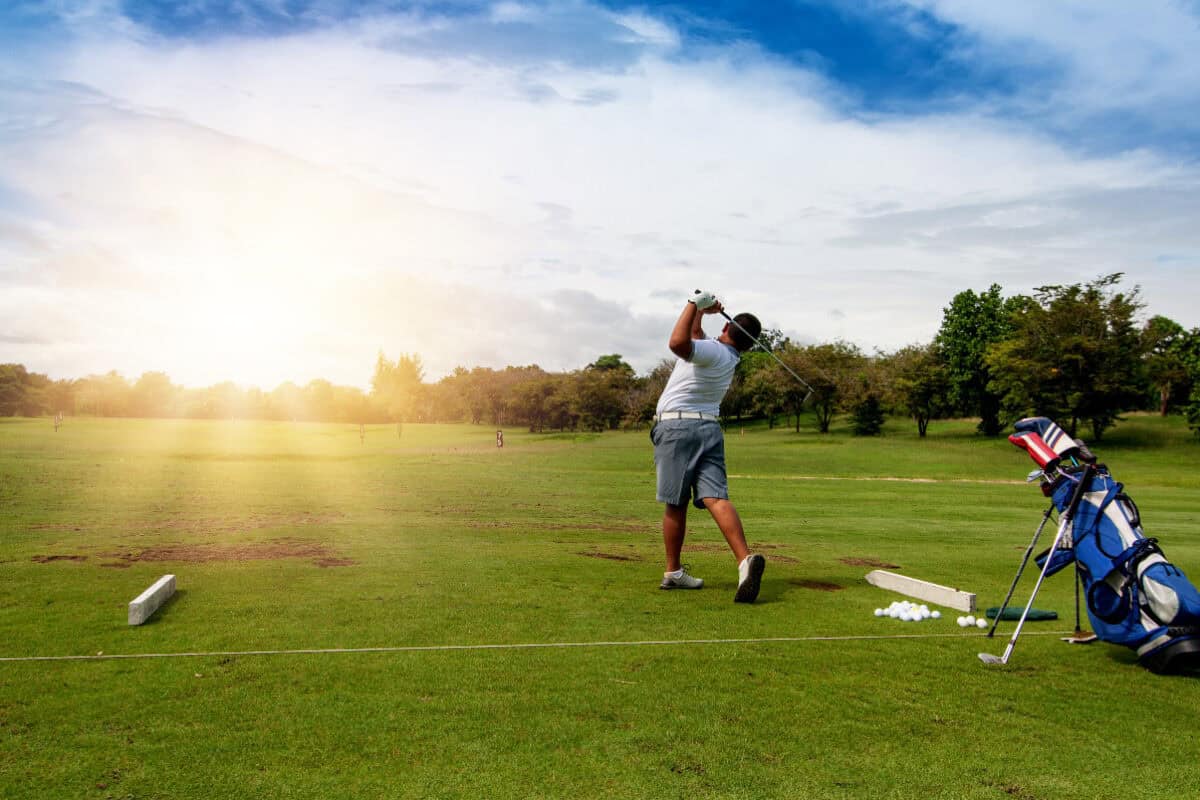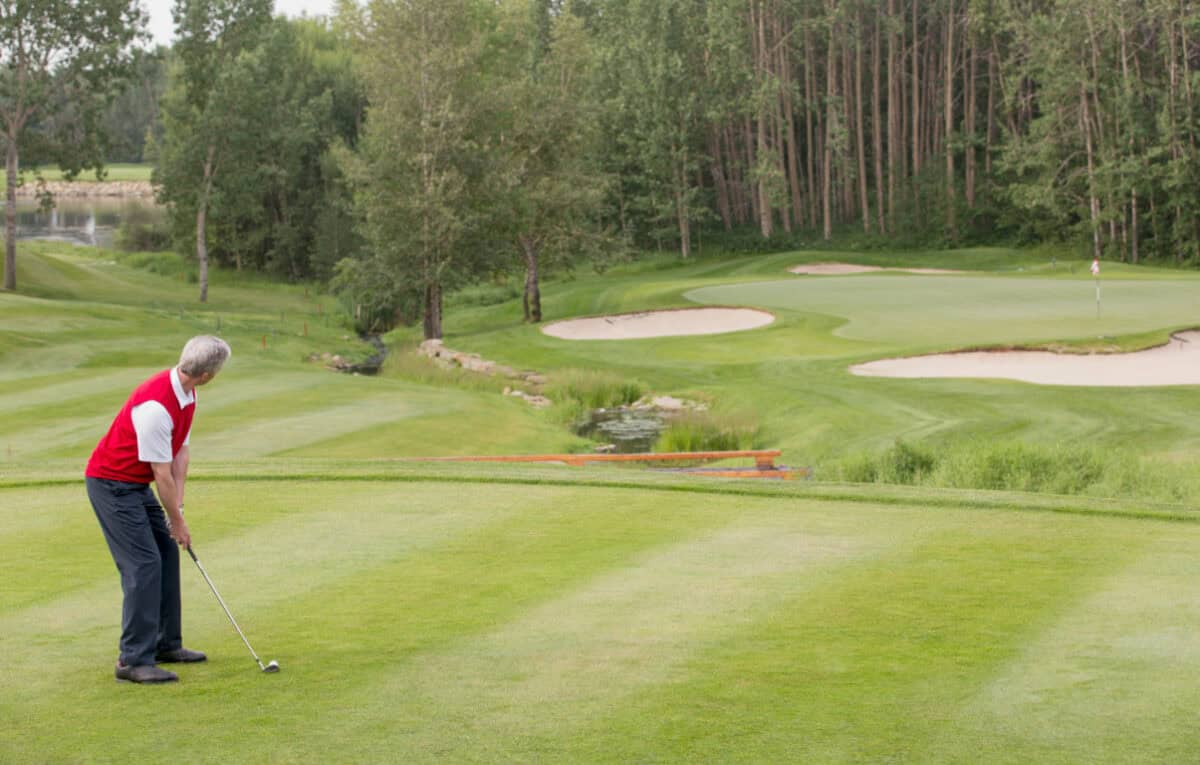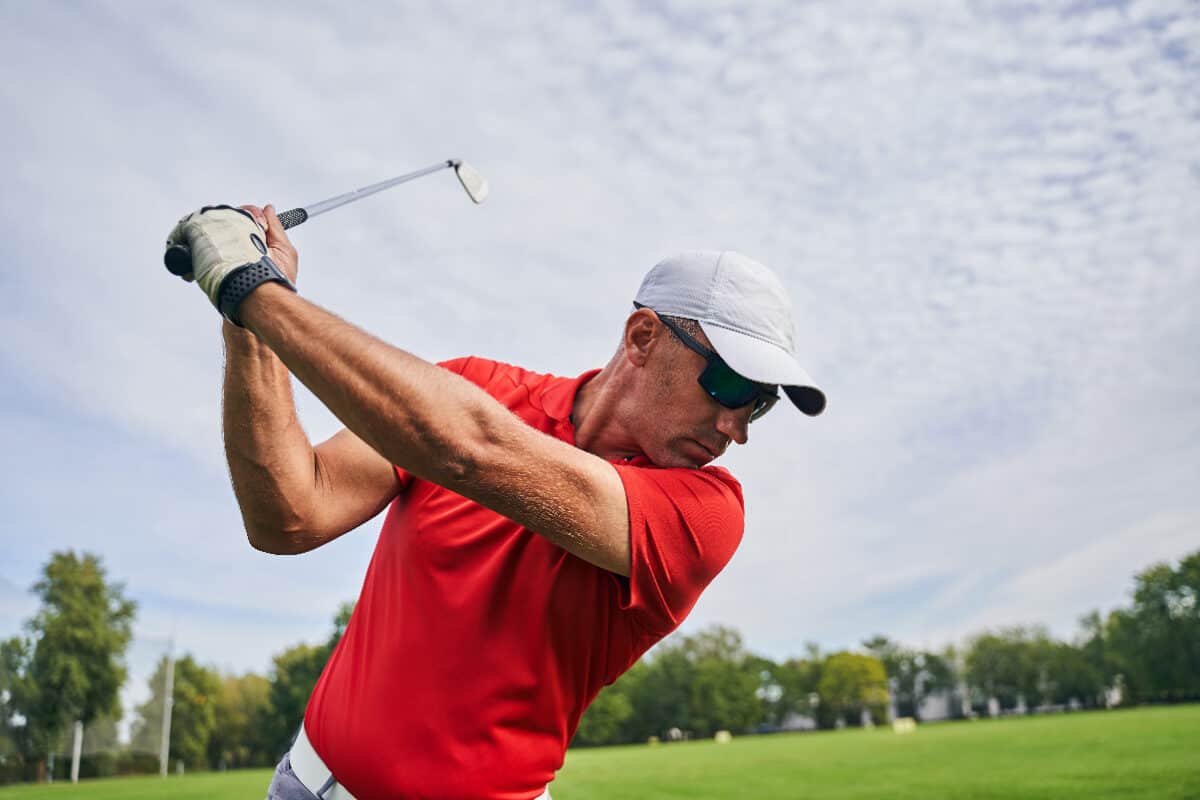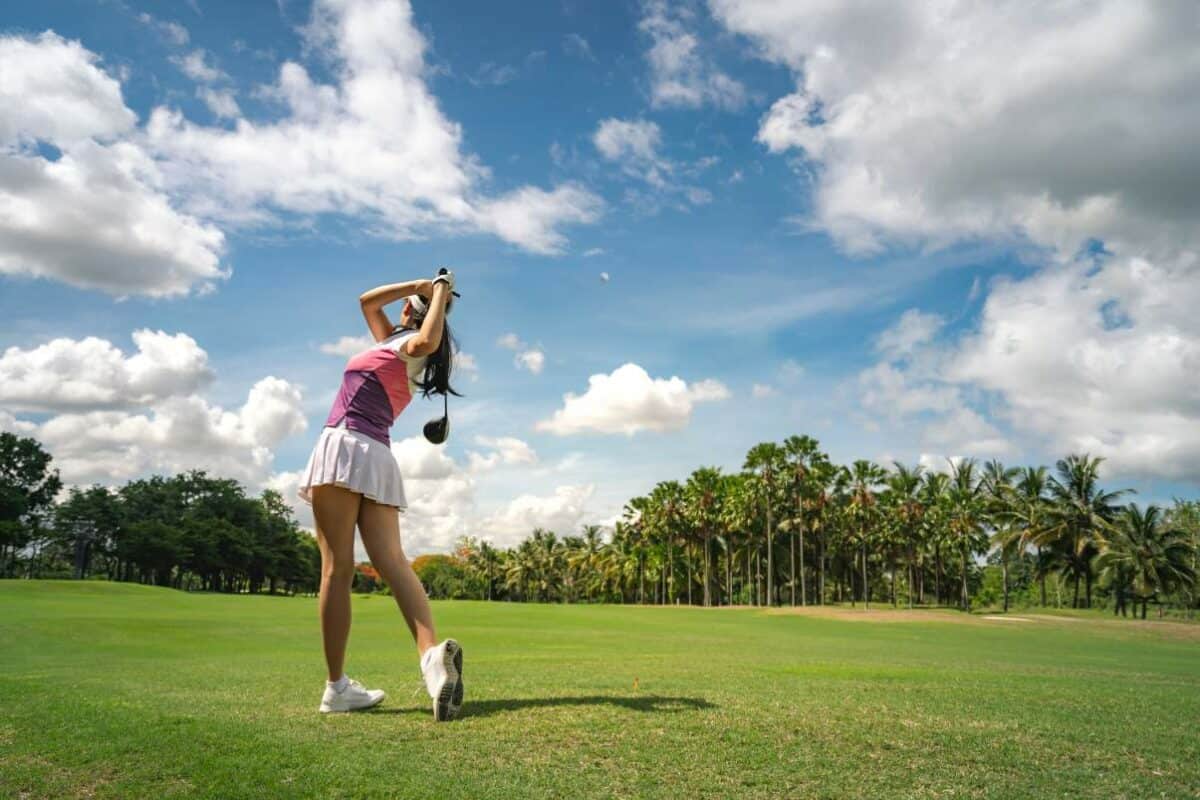Why Do I Hit My Iron Shots Too High?
Do you regularly hit towering iron shots that balloon rather than penetrate through the wind? An overly high ball flight can cost you distance and control.
Golfers want their iron shots to fly lower and run out for optimal carry and roll. A ball hit on a towering trajectory with too much height will be affected more by wind, stopping its forward progress.
Plus, hitting irons too high can lead to inconsistent distance control. If you struggle with iron shots that launch too high and float through the air, there are some common causes and fixes.
Analyzing your swing and contact can help diagnose the issue. Here are some of the most common reasons amateurs hit their irons too high along with tips to shallow out your trajectory.

Steep Downswing Angle
One of the main swing characteristics that launch iron shots too high is an overly vertical downswing.
Golfers who start the downswing by driving the club too steep into the ball will increase dynamic loft at impact.
The steep angle of attack adds loft to the iron as you strike down, which launches the ball higher into the air.
For most consistent ball-strikers, their downswing path shallows out as it approaches the point of contact.
Swinging too steeply through impact is an energy drain and loses the proper compression you need.
Flattening your downswing allows you to strike the ball more efficiently with descending blows for optimal distance.
Work on feeling your hands drop vertically only for the first foot or so of the downswing before shallowing out the path.
Your swing path should feel circular in motion rather than up and down. To compress the ball without adding height, try to brush the turf slightly after contact rather than hitting deep behind the ball.

Improper Weight Shift
Another common swing habit that can launch irons shots too high is failing to properly shift your weight during the downswing.
When hitting iron shots, you want your weight to drive forwards so that it reaches at least 70% on your front side by the time your club makes contact with the ball.
This forward weight shift is critical for consistent ball striking. If your weight stays too centered or back, you’ll likely have an overly steep angle of attack along with an open club face.
Allowing your weight to hang back on your back foot through impact launches the ball upward without much compression.
As you start shifting into your downswing, feel your weight move decidedly toward your front foot. Your chest and hips should turn to face the target fully by contact.
Staying behind the ball or “hanging back” will instinctively steepen your swing and open the face, launching your shots high with little control.
Transferring forward properly helps to shallow out your angle while closing the face for optimal iron play.
Weak Grip
The placement of your hands on the club grip can also influence iron ball flight. If your grip is too weak with the clubface open, it will cause you to hit higher shots consistently.
At setup, check that your left hand (for right-handed golfers) grip aligns properly down the underside of the shaft.
You want to see the V created by your thumb and forefinger pointing somewhere between your right shoulder and right ear when looking down.
If your left hand is turned further underneath the club, it will promote an open face at impact. Similarly, your lead wrist should not cup or bow too much at address.
Allowing your lead wrist to cup and the grip to weaken will open up the clubface as you swing into the ball. This open face adds loft and encourages a higher launch angle.
Strengthening your grip pressure while reducing lead wrist cupping can help square the face through contact for lower flights.
Low Ball Position
Ball position can also have a dramatic effect on iron trajectory. Hitting iron shots too far back in your stance often sends them skyward with a high peak height.
When your iron ball position is too low in your stance, it encourages a more downward strike. This steeper angle of attack adds dynamic loft to the shot, increasing launch angle and height.
For consistent compressed iron shots, you want to play the ball off your front instep, aligned with your sternum.
A centrally located ball encourages an efficient shallowing blow rather than a steep dig.
Focus on placing your iron shots forward in your stance, close to your left armpit (right armpit for lefties).
Don’t play the ball position too far back from the center toward your trailing foot. Give yourself room to strike slightly up and compress the ball without over-lofting.
Excessive Wrist Hinge
Allowing your wrists to hinge and cup excessively during the backswing is another movement that commonly leads to topped iron shots.
When your wrists break down early on the backswing, it makes it very hard to square the face at impact. Holding an extra wrist hinge typically flips the face open as you strike the ball.
An open clubface will obviously add loft and encourage a higher ball flight. Work on maintaining firm wrists that stay relatively quiet as you swing into impact.
Let the bigger muscles turn your shoulders and core rather than relying on hand and wrist action alone.
Quieting your wrists promotes solid impact with a square clubface for penetrating flight.

Club Loft Too High
The loft on your irons themselves can also influence ball height. Using irons with excess loft can cause even well-struck shots to balloon higher than expected.
Most average golfers do not make a consistently solid impact on the sweet spot. Mis-hits toward the toe or heel will jump even higher off a strongly lofted iron.
Evaluate your distances and trajectory tendencies with mid to long irons. If your upper irons launch with too much height and don’t roll out, you may benefit from transitioning to lower lofted iron sets.
Players with moderate swing speeds can often gain better trajectory control using game-improvement cavity back irons with stronger lofts.
Don’t be afraid to strengthen your iron set makeup if excess height is hurting distance.
Teeing Irons Too High
Iron shots played off the tee will typically fly higher than those from the fairway or rough.
The tee gives the clubface a perfect lie to sweep the ball airborne efficiently. And teeing it too high further exaggerates this launch angle.
When hitting irons off the tee for par-3’s or forced carries, pay close attention to tee height.
Only tee the ball high enough to catch the sweet spot. Lowering the tee height (or doing without a tee entirely) can reduce dynamic loft added at impact.
You want to sweep the ball cleanly but not elevate the trajectory more than necessary.

Downwind Conditions
Wind direction and strength can also influence launch angle. Downwind conditions make the air more dense for the ball to fly through.
This allows your iron shots to launch higher and float longer through the air. You may be hitting picture-perfect iron shots but get extra peak height thanks to the wind bringing the ball up.
Be mindful of substantial downwind conditions when choosing iron clubs. The wind elevation can sometimes allow you to club down from the yardage you usually hit.
Don’t club up just because the wind makes the ball fly further through the air. Rely more on trajectory than total distance when picking irons into the wind.
Fix Your High Iron Shots
In summary, there are several swing and equipment factors that can contribute to hitting iron shots too high. Be aware of your downswing path, weight shift, grip, ball position, wrist hinge, and club loft to diagnose the problem.
Oftentimes, high iron shots are not fully struck so making a solid impact itself will lower flight.
If you know why your iron ball flight is too high, make the necessary setup and swing adjustments to compress shots and lower trajectory for better control and distance.
